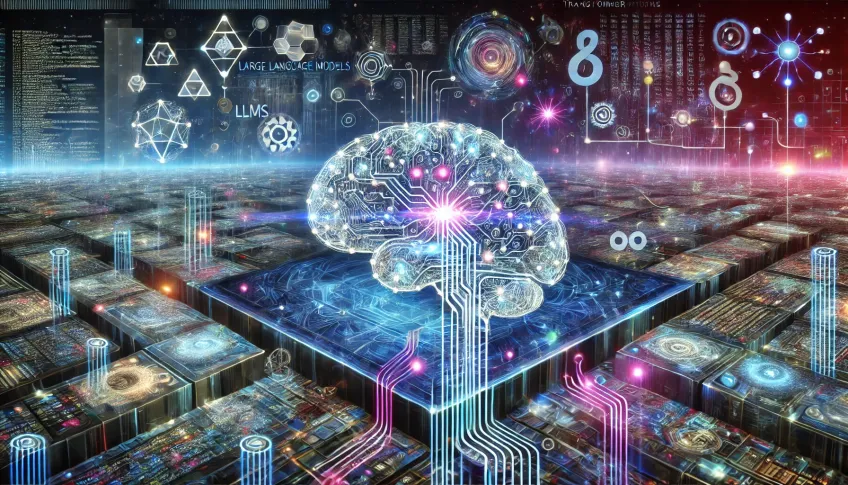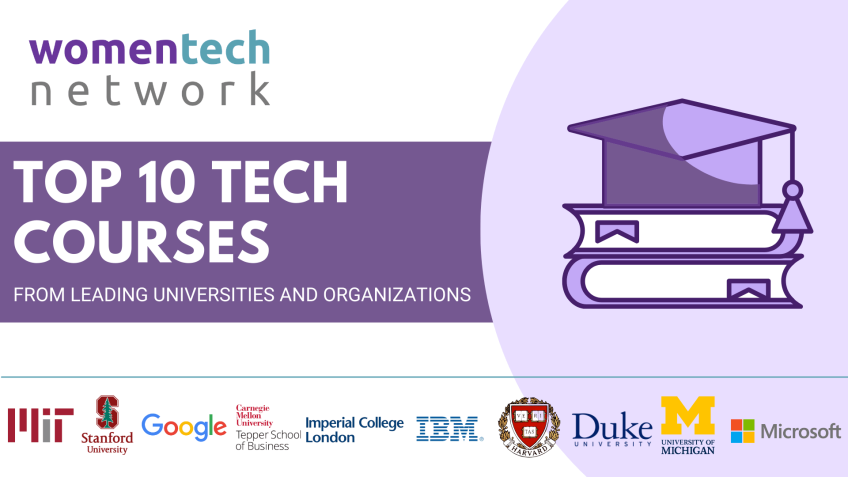Explain Machine Learning as to a kid
Understanding Machine Learning in Its Simplicity
Hello, everyone. Welcome to our session at The Woman Tech Network Global Conference 2021. I'm Precious Kala, a machine learning engineer at L SQUARE in Nigeria and today, I will be demystifying machine learning, making it as simple as explaining it to a kid.
Exploring the Concept of Machine Learning and Artificial Intelligence
Artificial intelligence, machine learning- these terms are being bandied about these days, but what's the real deal with machine learning? In simple terms, machine learning is a branch of artificial intelligence that allows computers to learn from data.
It is a type of artificial intelligence where the system observes patterns, learns from these patterns, and uses what it has learned to make predictions.
Analogy of Machine Learning
To make things clearer, consider this analogy: If a child touches a candle flame and experiences the sensation of "hot," it taps into this memory when it sees something similar, such as a stove top. The child uses the previous experience (the pattern) and makes a prediction not to touch the stove top — that's machine learning in the simplest form.
Machine Learning vs Traditional Explicit Programming
In traditional explicit programming, a developer writes a program or a set of instructions for the computer. However, machine learning has revolutionized this process. With machine learning, all you have to do is to provide the computer with the input and output (like data and labels), and the computer develops a learning algorithm or a model on its own.
Machine Learning Models
The machine learning model is like a representation of how the real world works concerning your data. It simplifies large amounts of data into a single decision or prediction. For example, a program could be written to recognize cats' images. With machine learning, the computer learns to distinguish between images containing cats and those not containing cats and creates a mapping or a function, referred to as learning.
Applications of Machine Learning
Machine learning's applications are diverse. It is widely used in various sectors to make predictions and aid in decision-making.
Getting Started in Machine Learning
To venture into machine learning, you have to start with learning a programming language, typically Python, after which you can proceed to data analysis and visualization. You will also need to learn about data science, where you'll build models and make predictions.
Tools like Power BI, Matplotlib come in handy for data cleaning and generating insights. Once comfortable with the data science basics, you can delve into machine learning, where you'd learn about model deployment, hosting models, and eventually deep learning.
However, if coding daunts you, certain resources allow you to build models without code, like Microsoft Azure. However, to fully immerse yourself in machine learning, knowing how to write code is essential.
I hope this quick brush on machine learning has given you a grasp of what it entails. For further inquiries or connections, you can reach me on Twitter at @Celia Precious K.
In case of any questions or for people interested in machine learning or data science, feel free to reach out. Thank you!
Video Transcription
Right. I have everyone. Welcome to my session of The Woman Tech Network Global Conference 2021. I'm Precious Kala from Nigeria. I'm a machine learning engineer at L SQUARE, a financial company here in Nigeria as well.And my interest lies in the intersection of artificial intelligence and care though we have a very short time. So let's get it. Let's get into what we are here for. All right. So I started writing codes, learning Python, performing analysis, cleaning data and building machine learning models.
I've always asked myself if I was to, to explain machine learning to a complete layperson, would I be able to? So then I have to learn how to. So right now I'll be explaining machine learning in its simplicity. I'll be explaining machine learning like I'm explaining to a kid. All right, I know we have uh terms like artificial intelligence and machine learning being thrown about. But what exactly is artificial intelligence? What exactly is machine learning? Machine learning is a large source of artificial intelligence that allows computers to learn from data. It is a form of artificial intelligence that observes patterns, it learns from these patterns and this is what it learns to make predictions. But a few examples always make things more clearer.
So are we making use of this very simple analogy? Ok, let's say a young child is playing a tune and this young child is seeing a candle film for the first time and out of curiosity, this young child wo and six is an film. As expected, the young child will cry and yell for pain due to the hotness from the candle film and it will get registered in the chat brain. That that thing looking red and bright is painful. Ok, let's say two days after this same young child is playing in the kitchen. And this time he is seeing a stove top for the first time. Again, we all know babies are always curious and then he is curious again and you w us over this time, he thinks of sticking his hand over the stovetop. But this young child notices the red and bright color of the stovetop. Then he remembers the incident of the previous day with the kind of film. Then this young child ignored the stovetop to be clear. This is just machine learning because this young child launched pattern from the stove from the candle film to make predictions on the stovetop. He launched the pattern of red and bright miss pain from the stove from the candle film. Let's now say this young child, he ignored this to talk because his parents warned him against it. Then that will be explicit programming and not machine learning.
In traditional explicit programming, the developer writes a program or a set of instructions to the computer and then the computer or create an output by itself, it can even take in some data and then it creates an output by itself. But machine learning has flipped this process on its head where all you have to do is to provide the computer with input and output like images uh like data and their respective labels. And then the computer create a learning algorithm on its own called mod. Now that raises a question, what is the module we know as humans, we are always bombarded with series of decisions to make questions to answer and some are a bit easier like do you need to brush your teeth today or should you pay your rate? Yes. Those ones are a bit easier while some are a bit more difficult. Like um should you have asked that person you've had a crush on um what uh how do you plan your day to improve productivity? And then there are also some decisions almost impossible to make without the app of a code at data. And then we have questions like what stocks should you invest in right now? Would your borrower payback or default or e or alone? So we have machine learning shining in this to or of decision making and the ultimate goal of machine learning is to simplify large amount of data into a single decision or a prediction.
And then the model we are having here at the middle is like the representation of how the real world works on your data. It is your final product. OK. Let me make another example. Let me use another example here. Let's say I want to write a program that takes in images that takes in images returns true. If there is a cut in an image and returns F, if there is no cut in an image with machine learning, all I have to do is to provide the computer with images with images of cats and non cats and the computer and their respective labels, cut images, non cut images with their respective labels.
And then the computer creates a mapping on its own. Let's say I'm passing in 1000 cats images with 1000 non cut images making 2000 in total and then images containing cuts are labeled as true. While images contain while non cut images are labeled as force. In this sense, we have this equation Y equals FS where Y is the respective label of each of the images X is the image itself. YF this particular F is a function is a function. The machine learning model is going to create on its own automatically. And this entire process is learning the entire process on the screen is is training, sorry is training where the computer get to learn from the data. And after training, we can now introduce a new image to the computer, we can feed it a new image to the map function and then it returns an output, it returns its prediction of either true or false. So yeah, machine learning, machine learning is being used is very wild and is being used in in various areas in making predictions and in decision making. Yeah, that is everything about machine learning. I hope this talk must have given us a better understanding of what machine learning really is of the basic fundamental of machine learning. And finally, you can reach me on Twitter at Celia. I'm precious. Kaw.
You can reach me on Twitter at pre U also on linkedin at Kawi pressures and then I received news Kao pressures 99 at gmail.com. I'm looking forward to connect with everyone on this call. Thank you very much. OK. I would like to accommodate questions in case we are having questions. Yeah, I would like to accommodate questions from maybe newbies, those want to get started in machine learning or data science. Yeah. OK. I have a question here. How do you start machine learning? Yeah, machine learning.
As we all know as and I've said earlier is a lack of set of artificial intelligence, but you can't just dive into machine learning streets. There are some, there are some resources you have to take some programming languages, you have to learn and people always learn either hard or or Python. Yes, people either learn hard or Python, but the most commonly used one is Python. So before you can get started in machine learning, you have to learn Python. And after being, after being comfortable with Python, most people they have this series. Like after after learning, Python, they go into data analysis and data, data analysis, data visualization and data science.
Once you get into data science, data analysis, you get to learn all the all the visualization tools like Power B IC BT Malo Lib on how to like clean data and generate insight from data. All those tools are subsets of machine learning. And after being comfortable with data cleaning, there you go into data science. Data science is where you analyze data and you start building models to make predictions. And after data science, you can now dive fully into machine learning. If machine learning, you get to learn about model deployment, model, building hosting models, models deployment. And also you dive into deep learning as you go into that. OK. Does that answer your question? Hm. OK. Jessie. That was Jesse. And what programming language do you suggest for us to learn? First? I think I mentioned that. That is Python. Most people learn Python force in order to get started in machine learning, you learn Python force. I can't see a question yet. How to start with no code? Oh The the thing is if you want to, if you want to dive into machine learning, you have to like write codes. But there are some resources you can make use of in building machine learning models. I think these tools are available on Microsoft Azure where all you have to do, what you have to do is to passing your mo to their already in in on their already made platform, then you can start making prediction based on how the their platform has been configured.
I think that is Microsoft Azure. But most times for you to dive into machine learning, you know, you must know how to write codes, you must know how to write codes. Yeah. All right there we cut. Yeah. Any more questions before we end this session? It's almost time. It's already time. All right. Thank you very much. Thank you very much. Everybody. Nice. Getting to meet you. Huh? Bye.





